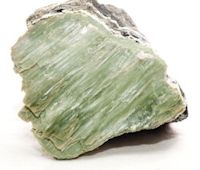Asbestos Basics
What is Asbestos?
Asbestos is the generic term for a group of naturally occurring highly toxic fibrous silicate minerals with high tensile strength, flexibility, and resistance to thermal, chemical, and electrical conditions.
Asbestos Minerals

Chemically, asbestos minerals contain silicon and oxygen atoms in their molecular structure. Asbestos is also resistant to heat and corrosion.
Asbestos fibers are 5 micrometers or longer with a length-to-diameter ratio of at least 3 to 1.
Asbestos includes the mineral fibers chrysotile, amosite, crocidolite, tremolite, anthophyllite, actinolite and any asbestos-containing material (ACM) or presumed asbestos-containing material (PACM) that have been chemically treated or altered.
Asbestos may also be "friable" or "non-friable":
- Friable asbestos is material containing more than 1% asbestos by weight or area that is crumbly, dusty or powdery. It can be crumbled, pulverized or reduced to powder form using the hands. Most asbestos-containing material is friable. Examples include: sprayed coatings or insulation, lagging, loose asbestos, or asbestos in its raw state.
- Non-friable asbestos is material containing more than 1% asbestos which is held within another material and cannot be crumbled, pulverized, or reduced to powder using the hands.
Knowledge Check Choose the best answer for the question.
1-1. Which term below describes material that contains more than 1% asbestos and is crumbly, dusty or powdery?
You forgot to answer the question!
